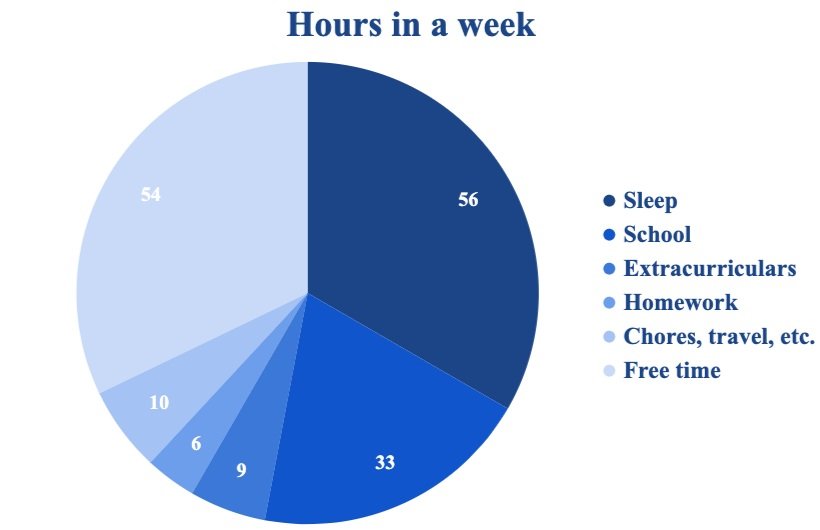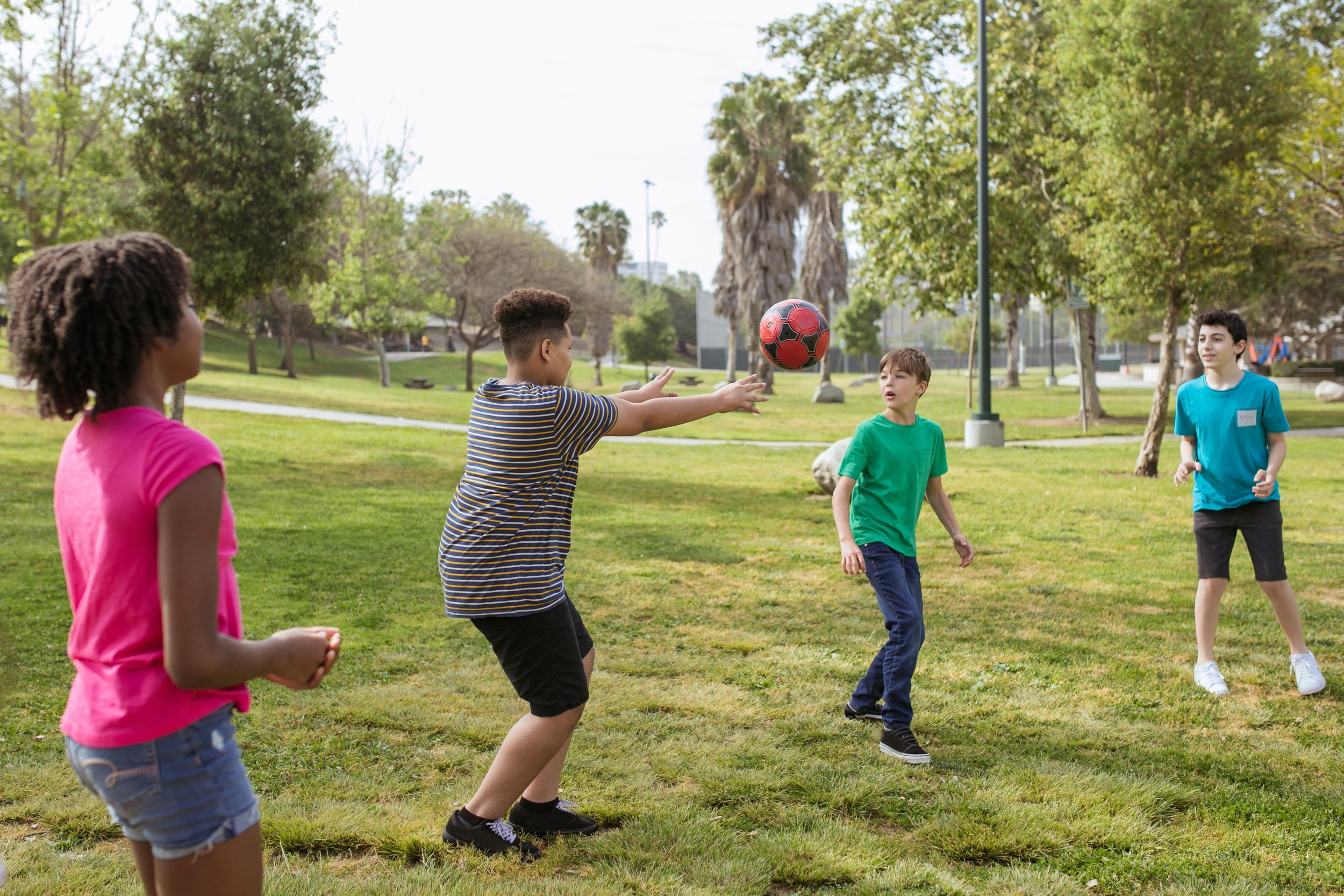How to Get the Most From Your Days
Consider a week in the life of a high school student. Every week contains 168 hours. A student who spends 8 hours a night sleeping has 112 waking hours left over. Of these, approximately 33 hours are spent in school (6.5 hours a day, five days a week). If a student participates in 9 additional hours of extracurriculars, plus 10 hours or so for traveling, getting ready, eating, and chores, they have 60 hours left for free time and homework.
Now, let’s say that this student does one hour of homework per school night, plus one on Saturday (this amount, by the way, is slightly above the national average). This leaves them with 54 hours of flexible time during the week. As illustrated below, students have almost as much open time to spend as they choose as they do for sleep.
How can students strategize to make better use of the time they have?
Step 1: Set a limit
To get your high schooler to adopt a new habit, you can set either limits or requirements. A limit is a negative demand- i.e. “Don’t eat food in your room.” A requirement is a positive demand- i.e. “Clean up your room.” You will help your child the most not by requiring them to do something, but by setting a limit (more on this in Step 2).
One of the most important limits to create regards screen time. According to recent studies, students spend 8 hours and 39 minutes per day in front of a screen—61 hours a week. And they dedicate the vast majority of that screen time to watching shows, playing video games, and scrolling through social media.
To help them use their free time well, limit the amount of time your child spends on the screen. As a high schooler, they are (hopefully) capable of having a rational conversation about their screen time usage. Begin by looking at the amount of time they spend on their phone (here’s how for Android and here’s how for iPhone).
Then, discuss potential limitations—perhaps one afternoon a week will be screen free, or they will give you their devices every day at a certain time for one hour. This will be harder to enforce with some children than others; if they resist, start with the bare minimum (i.e. 30 minutes phone free at a certain time each day). Remember that the goal is not to end screen time usage—simply to create a little time free of screens. Of course, you can also reinforce this through general encouragement or some sort of reward system.
Step 2: Let them get bored without requirements
For students to become self-motivated, lifelong learners—curious, thoughtful, and interesting adults—they need time to develop motivation on their own. Unfortunately, educators and parents often think that creating requirements—like a “summer learning camp” or “homework reward system” will inspire students to learn.
Just as high schoolers can’t motivate themselves while vegging out in front of a screen (hence the limitation of Step 1), they also cannot motivate themselves to do something imposed on them by an outside authority. By definition, requirements take responsibility from the student’s own curiosity and motivation and put it on a system of rewards and punishments.
So, after your child gives you their phone and says that they’re bored, don’t give them something to do. Why? Because boredom is actually a good thing. Boredom gives us the freedom to be creative, to daydream, to figure out what we find interesting, to relax and recharge. It might take a few days (or weeks of boredom), but eventually…
Step 3: They find what they enjoy
It turns out your child, deep down, has something that they want to do. They’ll naturally gravitate towards what they find most interesting. You shouldn’t be afraid of it not being “productive” or “resume-worthy.” As long as it seems non-destructive and enjoyable, the activity is probably worthwhile. Here are a few ideas:
Working out (includes going on walks or runs)
Learning or improving a skill (playing a musical instrument, writing, baking)
Reading (fiction or nonfiction)
Creating something (music, videos, art, etc.)
Playing sports or games with friends
Spending time reviewing for school
Step 4: Encourage them
Once your child has found something they really enjoy, encourage them to keep going. This doesn’t mean that when your child discovers a newfound love of writing that you should make a progress tracker to help them write their first book. Instead, just read what they write and express genuine enthusiasm. If your child seems like they still don’t know what to do, you might want to help them explore.
What are the benefits of this unstructured free time? Well, besides the intangible benefits of extended curiosity, enthusiasm, and motivation your child now has a new skill or habit that makes them happy, and might even end up being helpful for a future career or educational experience. In our world, people often feel anxious, drifting from activity to activity. By limiting your child, you create space for them to stop drifting and start directing their lives.







